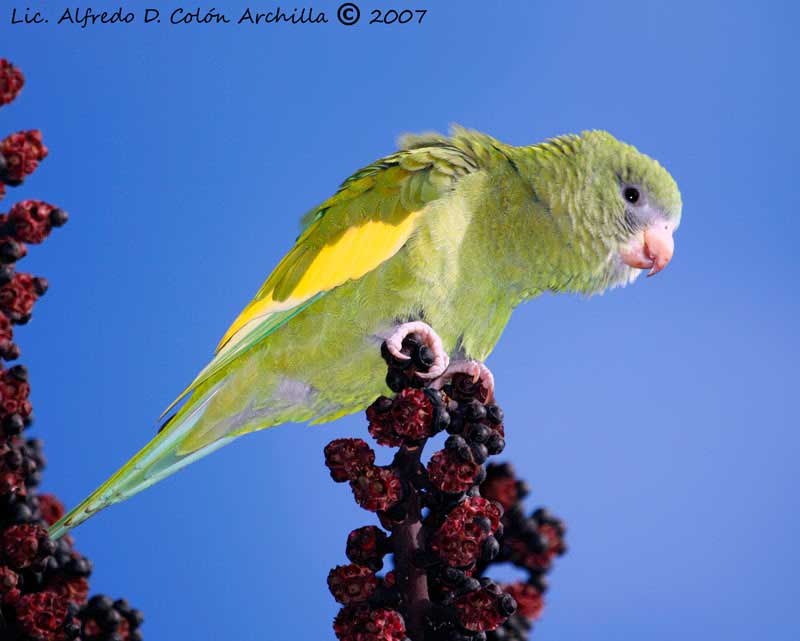
Canary-winged Parakeet or White-winged Parakeet
Brotogeris versicolorus
Psittaciforme Order – Psittacidae Family
DESCRPTION:
Canary-winged Parakeet is a common cage bird.
Adult male has green plumage almost overall, slightly darker on back. On the wings, alula and inner primary coverts are white. Outer webs of first primaries are blue, with green edges, and remaining of primaries is white. Secondaries are white with yellow tinge, and secondary coverts are yellow. Tail is graduated and green.
Underparts are green, with slightly paler throat. On the under wings, coverts are green. Flight feathers are darker green, and secondaries and tertials are white. Under tail is dark green.

Head is green with pale bluish forehead and face. We can see some scattered blue-grey feathers on face.
Bill is horn-coloured, slightly pinkish-brown. Eyes are dark brown, with pale grey bare eye-ring and lores. Legs and feet are greyish-pink.
Both sexes are similar.
Juvenile resembles adults, but primaries show less white and they have green tips. Secondaries are yellow with green edges. It has shorter tail. Bill is brown on lower base.
VOICE: SOUNDS BY XENO-CANTO
Canary-winged Parakeet utters high-pitched “screek” interspersed with “weechah-weechah”. These parakeets perform some duets, involving rapid exchange of calls. These duets can be used towards other parakeets in defence of roosting or feeding areas, and nesting site.
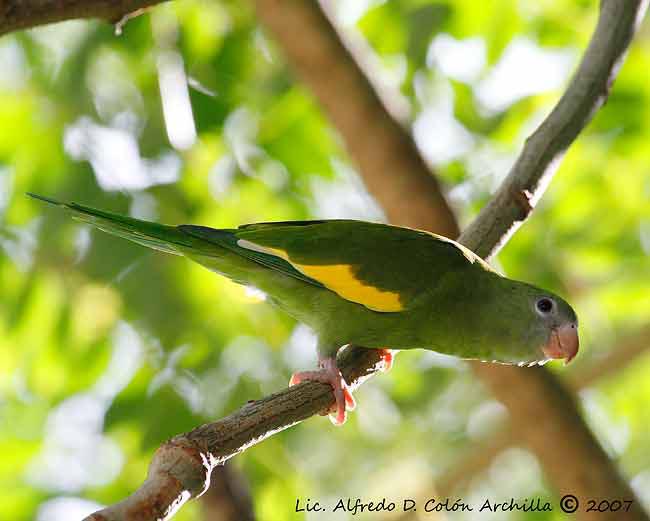
HABITAT:
Canary-winged Parakeet frequents wet forests, edges and clearings along rivers, gallery forests along watercourses, parks and gardens. Usually, it avoids deep tropical forest.
RANGE:
Canary-winged Parakeet is native to the Amazon River Basin, from south-eastern Colombia to the River’s mouth in Brazil. We can find feral populations in Lima, Peru, Puerto Rico, Dominican Republic and also mainland USA.
BEHAVIOUR:
Canary-winged Parakeet is a very gregarious species, living in small or large groups. They gather in great numbers at communal roosts at night. This species is highly arboreal.
Canary-winged Parakeet feeds mainly on seeds and fruits, well hidden in dense foliage in canopy. But it can be very conspicuous while feeding at treetops.
Feral populations have adapted and also come to bird-feeders, feeding also on nectar and blossoms.
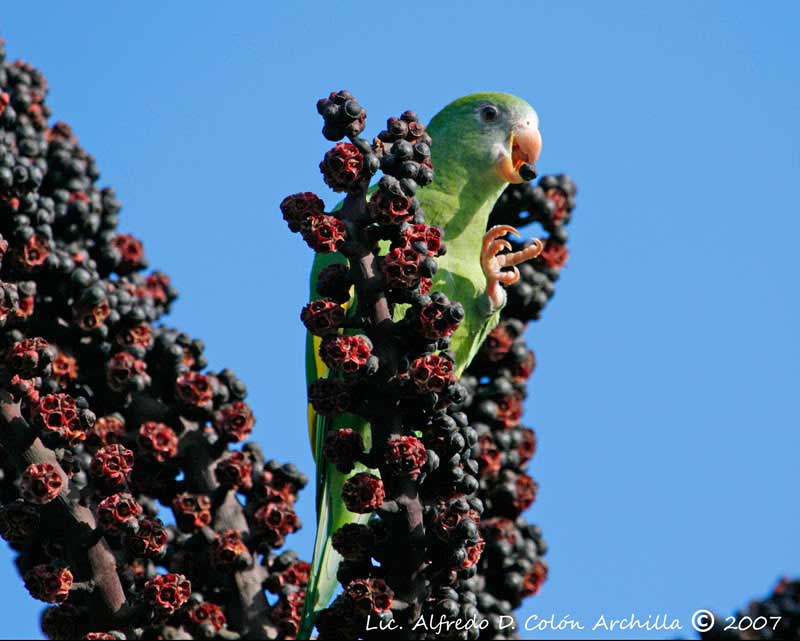
Often seen in pairs during breeding season, birds perform duets. These exchanges of calls are probably used to strengthen pair-bonds, but mainly in defence of roosting-sites, feeding areas and nest-site. These duets signal the close union of a pair, showing this pair as a unit within the flock.
If threatened, Canary-winged Parakeet raises its wings and claps them, in order to produce explosive noises.
FLIGHT:
Canary-winged Parakeet performs swift, direct flight above canopy, and it is noisy and conspicuous when flying. Its white flight feathers allow identifying the species while in flight.
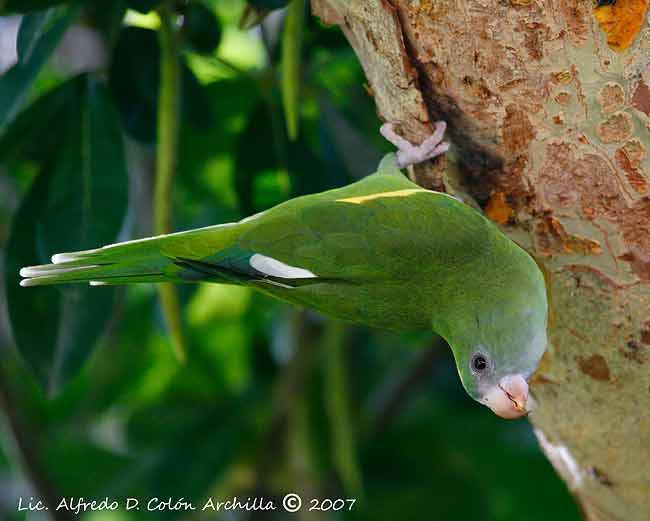
REPRODUCTION:
Breeding season occurs from January to July in South America.
Canary-winged Parakeet is a cavity-nester. It can use holes in trees, or form a kind of tunnel in dead palm fronds for nesting in.
Female lays 4 to 5 white eggs. Incubation lasts about 23 to 26 days. Usually, male may stay on nest at night, but incubation is mainly by female.
Chicks are altricial and naked at hatching. Female probably stay on nest for the first week, and feeds the young with food brought by male. Young fledge 50 to 60 days after hatching.
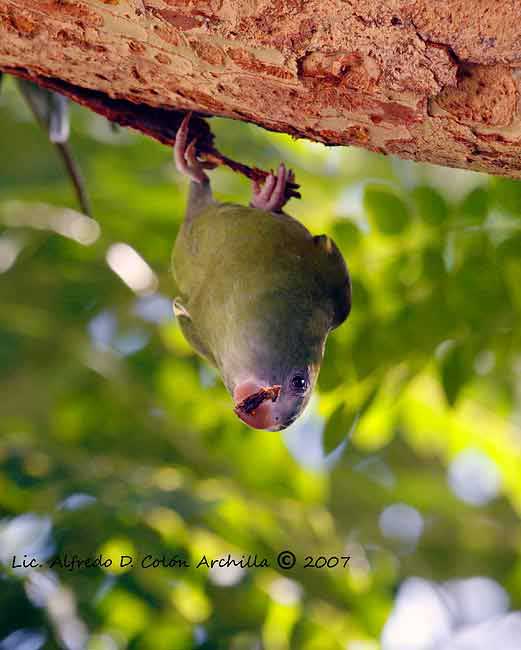
DIET:
Canary-winged Parakeet feeds mainly on seeds and fruits. Feral birds have adapted to other food resources, and consume blossoms and nectar, and frequent bird-feeders.
PROTECTION / THREATS / STATUS:
Canary-winged Parakeet is common to abundant in most parts of its range. This species is not globally threatened.
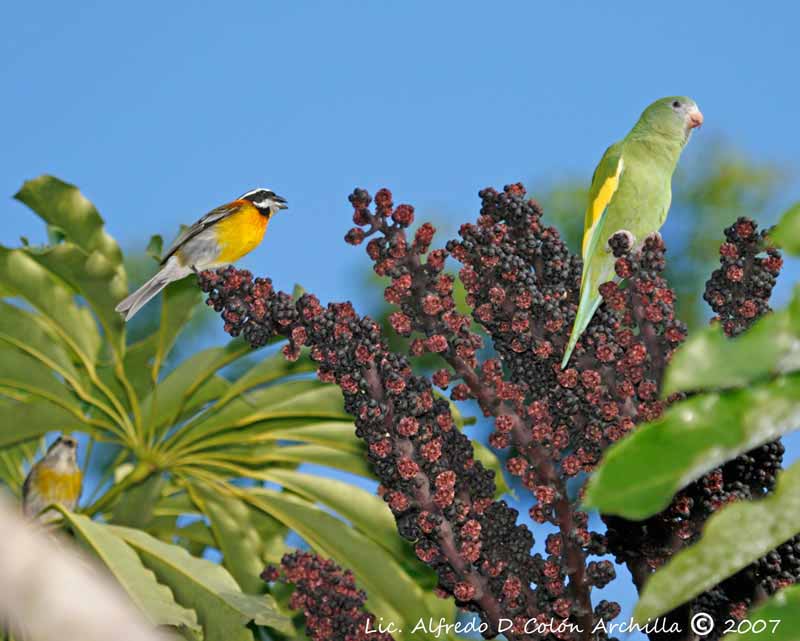
Fr: Toui à ailes variées
All : Weissflügelsittich
Esp : Catita Versicolor
Ital : Parrocchetto alibianche
Nd : Witvleugelparkiet
Sd : Gulvingad parakit
Photographs by Alfredo Colón
Puerto Rico Wildlife
Text by Nicole Bouglouan
Sources :
HANDBOOK OF THE BIRDS OF THE WORLD volume 4 by Josep del Hoyo, Andrew Elliot and Jordi Sargatal – LYNX EDICION – ISBN 8487334229
PARROTS OF THE WORLD – An Identification Guide – by Joseph M. Forshaw – Princeton University Press – ISBN 0691092516
A GUIDE TO THE BIRDS OF COLOMBIA by Steven L. Hilty and William L. Brown
Princeton University Press – ISBN 069108372X
Wikipedia (Wikipedia, The Free Encyclopedia)